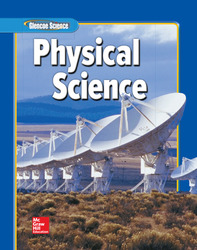1.
A) enlarged B) virtual C) inverted D) real 2.
<a onClick="window.open('/olcweb/cgi/pluginpop.cgi?it=gif::::/sites/dl/free/0078600510/193816/620_444_q2_q3.gif','popWin', 'width=NaN,height=NaN,resizable,scrollbars');" href="#"><img valign="absmiddle" height="16" width="16" border="0" src="/olcweb/styles/shared/linkicons/image.gif"> (4.0K)</a>
A) It forms a real image. B) It is reflected back through the focal point. C) It is reflected back toward the point of origin. D) It is reflected down and behind the mirror. 3.
<a onClick="window.open('/olcweb/cgi/pluginpop.cgi?it=gif::::/sites/dl/free/0078600510/193816/620_444_q2_q3.gif','popWin', 'width=NaN,height=NaN,resizable,scrollbars');" href="#"><img valign="absmiddle" height="16" width="16" border="0" src="/olcweb/styles/shared/linkicons/image.gif"> (4.0K)</a>
A) They pass through the new focal point. B) They do not pass through either the old or the new focal point. C) They pass through the old focal point. D) They reverse direction. 4.
A) at least two focal lengths B) exactly one focal length C) less than one focal length D) more than one focal length 5.
A) a convex lens. B) a concave lens. C) a concave mirror. D) a convex mirror. 6.
A) It gets smaller. B) It becomes virtual. C) It gets larger. D) It gets closer. 7.
A) 0.67 B) 0.4 C) 1.25 D) 1.70 8.
A) inverted and reduced B) upright and enlarged C) upright and reduced D) inverted and enlarged 9.
<a onClick="window.open('/olcweb/cgi/pluginpop.cgi?it=jpg::::/sites/dl/free/0078600510/193816/620_444_q9.jpg','popWin', 'width=NaN,height=NaN,resizable,scrollbars');" href="#"><img valign="absmiddle" height="16" width="16" border="0" src="/olcweb/styles/shared/linkicons/image.gif"> (6.0K)</a>
A) astigmatism B) nearsightedness C) farsightedness D) none (vision is normal) 10.
A) inverted and smaller. B) inverted and larger. C) upright and larger. D) upright and smaller.














